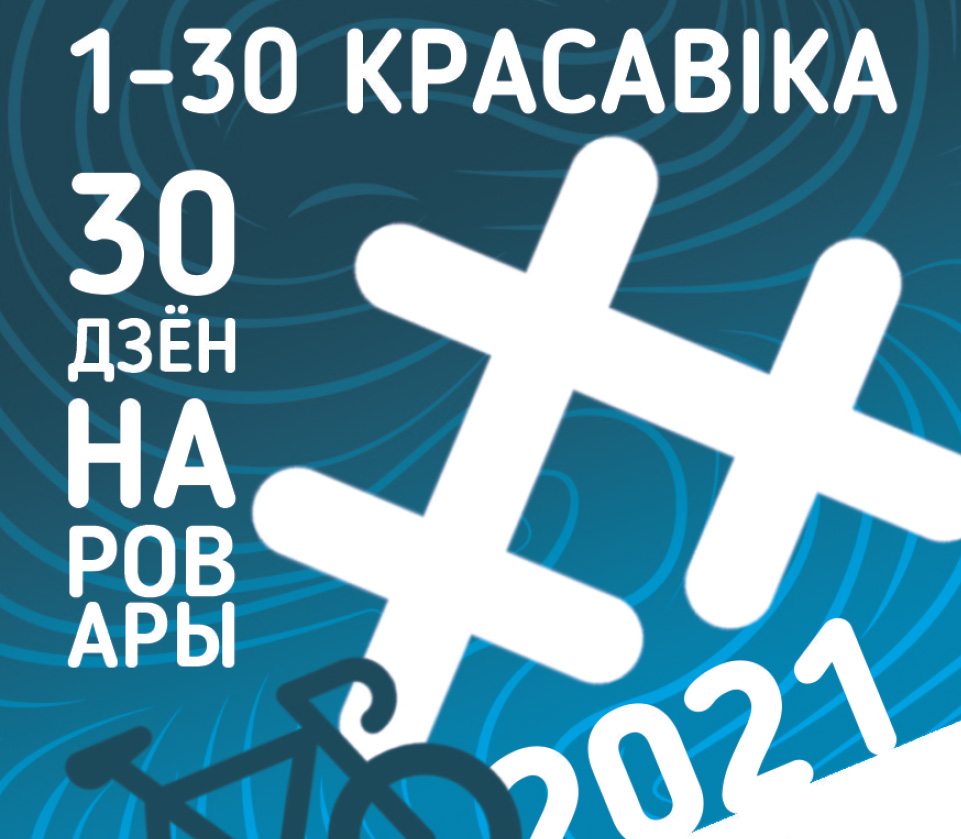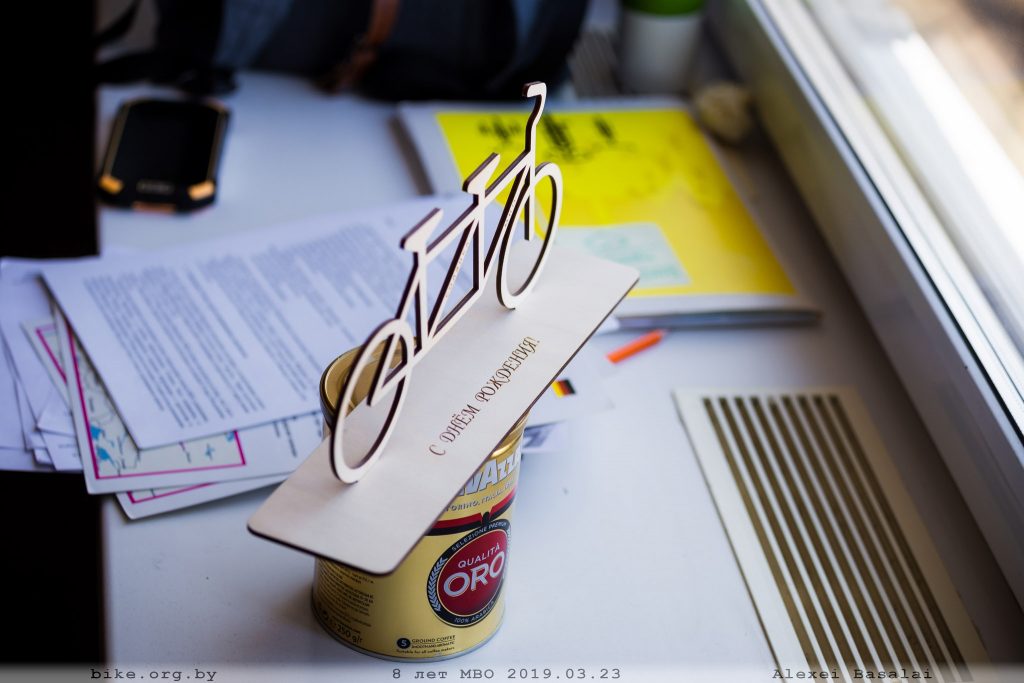In the 60s, the Netherlands was a land of cars, and today there are a lot of cyclists on the roads. When will it be the same for us? Designers from the country of "bicycle paradise" analyze Minsk.
The cyclist does not need to pass on the license
Traffic on the streets of Amsterdam will make many Minskers intimidate: a dense stream of bicycles, an abundance of signs, pockets for left turn and special traffic lights ... Nevertheless, there is no need to take a license for a bicycle, as it is not necessary in any other country.
- I do not know such countries, - the designer from the Netherlands answers the hot question of recent days Andre Pettinga.
At a lecture on June 4 in Minsk, he spoke about urban cycling culture. He and his colleague Wim Salomons for the second time in Minsk. As part of the Urban Cycling in Belarus project with EU financial support, they work with local engineers on a bicycle solution for Vera Khoruzhei Street and discuss other issues related to cycling infrastructure.
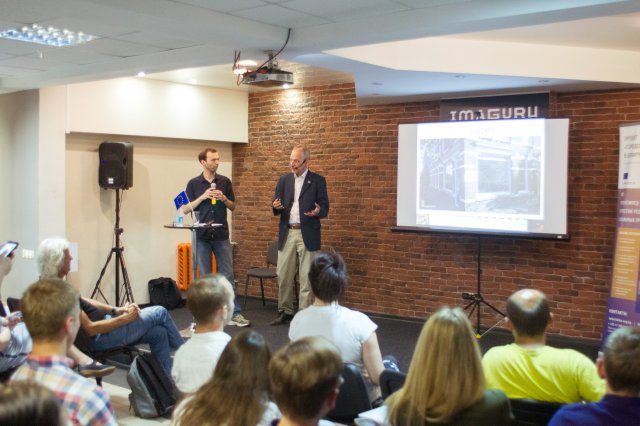
Photo: Anna Volynets
Designers have been working in their field since the late 60s, and were not only witnesses, but also the creators of the modern cycling movement in their country. Andre Pettinga is sure:
- Bicycles need education and training that parents and children do, He says.
- It's not about rights, it's about skill development. Using the bike is intuitive. The brain has time to understand how to operate a bike, and you can do it if you have no physical problems. If the speed is 40 or 50 kilometers per hour, the brain cannot cope. The higher the speed, the more peripheral vision is turned off, and then it is already necessary to develop special skills and get rights.
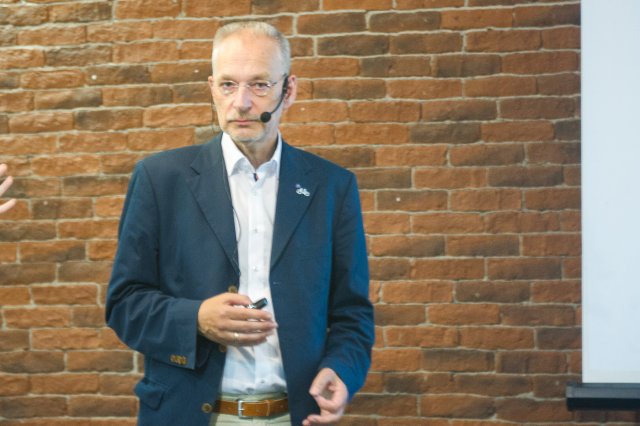
Photo: Anna Volynets
Making the urban space safe for everyone, including cyclists and motorists, according to Andre, can be relatively simple: by limiting the speed of movement to 30 kilometers per hour, including for cars.
The organizers of the meeting - "Minsk Cycling Society" - add:
- The infrastructure should make safe behavior convenient and unsafe behavior inconvenient. It is not fast, but we must strive first of all for this, and not for the certification of people., - says a member of the board of MBO Evgeny Horuzhy.
Crazy rules and time eating space
City traffic is governed by traffic rules that turn potential chaos into a system and educate people to behave safely. Andre is sure: traffic rules in Belarus are unique and ... insane.
- You know them, these rule articles, but they were new to Wim and me. You have unique rules, but they are insane. Why place your bike on the footpath? And what is this curb? He says. - The movement of a bicycle on the road in Belarus, even in places that are safe for this, is now prohibited.
Andre talks about infrastructure and is outraged. He shows a photo of a border 3 centimeters high. The audience chuckles - André, perhaps, has not yet met 20 centimeters high curbs?
But the absurdity is sometimes undeniable: for example, in some places the path breaks off, “like a black hole,” Brownian movement of bicycles and pedestrians appears at intersections. And this is not to mention the fact that the focus of the design is neither one nor the other, the priority is machines.
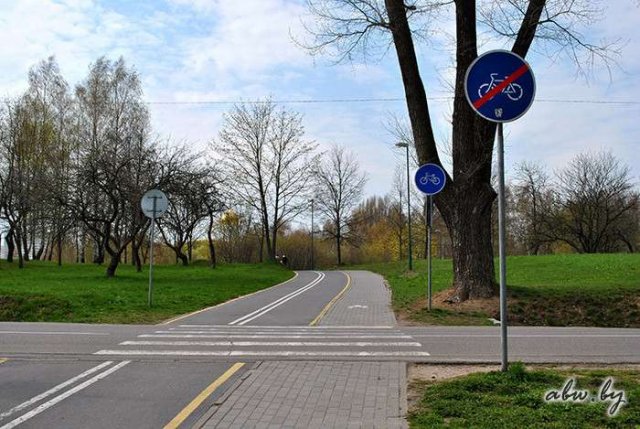
Photo: awb.by
- For machines 6, 8 lanes! And what's that? Shove everyone underground? Empty and ugly space is not fair, - says Andre about the underpass at the intersection of Khoruzhei and Kuibyshev streets. - I think in my country pedestrians and cyclists would not want to go underground.
A tunnel like this is time and money, Andre emphasizes and adds:
- If you maintain such an infrastructure, then cycling will not develop for you. And you have everything else: the bike network, the people and the vision of the desired future. You already have a community! 15 thousand people were at the bike parade? Wonderful! You have a website, shops, a bicycle kitchen, - says Andre Pettinga optimistically.
Driving on the road does not mean becoming like a car
Minsk is gradually moving away from the old way of organizing cycling - with the help of a bucket of paint and white lines - because it does not always work and leads to conflicts. What solutions does Minsk need?
- The best solution is to separate the space for cyclists and pedestrians. Safety? It should be clear to whom and where to go, Says Wim Salomons, the second guest from the Netherlands. - Where do we want to go in the future? We need more bicycles on the streets, which means give them more space, because you have a lot of it!
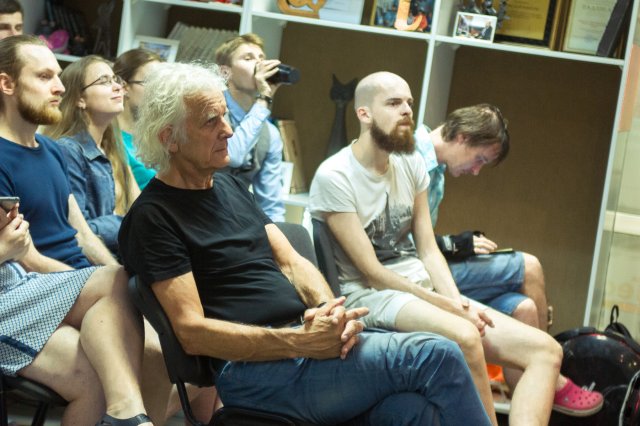
Photo: Anna Volynets
- Yes, they tell us about Minsk: here you can do anything with the help of money. In the Netherlands, it is more difficult: there is a small street profile, and it is much more difficult to solve these problems, - Chairman of the Moscow Military District Pavel Gorbunov.
Although, in Pavel's opinion, not everything is perfect here either: the first pilot cycle lane in Minsk on the roadway will appear on Vera Khoruzhei Street, but it cannot do without a conflict of interests of different road users. And cyclists themselves sometimes do not understand why they need a carriageway: a whole generation has grown up since the ban on traffic on it was introduced.
- They ask: "Are we going to have to move at a speed of 60 kilometers per hour?" - says Pavel. - And we return to the conversation that the speed should be limited to 30 kilometers per hour.
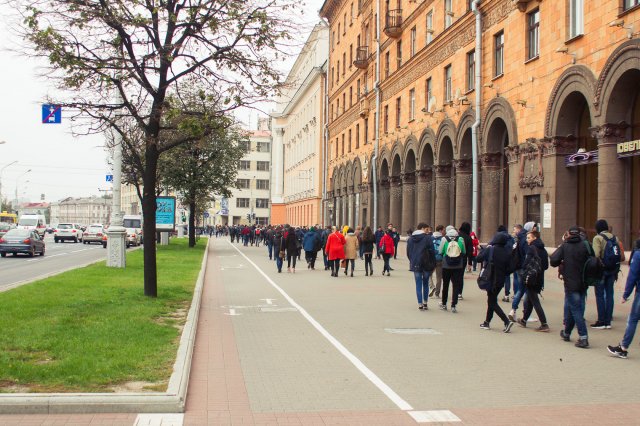
Photo: biketours.by
How was it in the Netherlands in the 60s?
From what starting point did the people of the Netherlands come to their current road organization? When will it be the same for us? Nobody will like the answer: when enough people die.
- In the 60s, everyone wanted cars, there were a lot of them on city streets, and there were many deaths in road accidents. Local and central authorities began to do something to solve the problem, Says André Pettinga.
André recalls how bicycle lanes were marked in the Netherlands, and at intersections and on sections where the speed is above 50 km / h, all road users were divided.
- This is a tragic vicious circle: until a lot of people die in an accident, no one will move. The authorities look at the statistics: no numbers - no problem. But it is there if you don't feel safe. There is no need to build wide roads and intersections in Minsk.
A slap on the head of a pedestrian is the origin of the myth that everyone is crazy
Sooner or later Minsk will change, as the trends show - most likely, it will become more cycling. Will conflicts and fights with a bat in hand end? Was this the case in the Netherlands?
- What is the culture of your cyclists? Are the stories true that cyclists have become kings of the road and are dismissive of others and, for example, can give a slap on the head to a pedestrian entering a cycle path, and cars give way to bicycles? - asked the director of the Moscow Military District Anastasia Yanchevskaya.
- If there are many cyclists, then some of them think that they are the kings of the road., Says André Pettinga. - They think that there is no one else. And this applies not only to traffic: there are 3-5% people who know the rules, but do not specifically follow them. From this is born the myth that everyone is crazy.
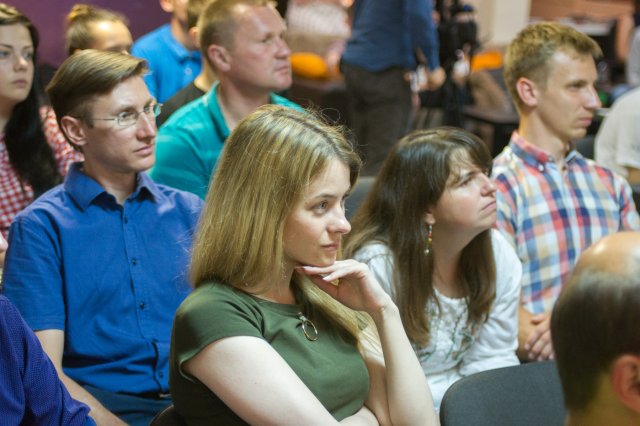
Photo: Anna Volynets
The video of this lecture, as well as recordings from other cycling events, can be viewed on the channel of the Minsk Cycling Society link.
The lecture was organized within the framework of the Urban Cycling in Belarus project, with the financial support of the European Union.
Text: Anna Volynets


